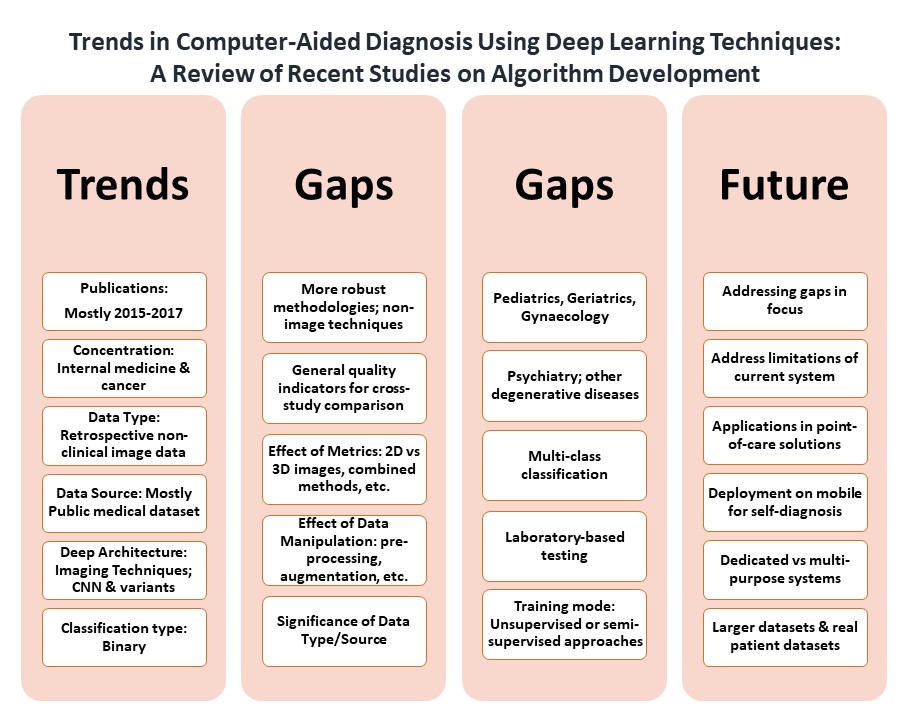With recent focus on deep neural network architectures for development of algorithms for computer-aided diagnosis (CAD), we provide a review of studies within the last 3 years (2015-2017) reported in selected top journals and conferences. 29 studies that met our inclusion criteria were reviewed to identify trends in this field and to inform future development. Studies have focused mostly on cancer-related diseases within internal medicine while diseases within gender-/age-focused fields like gynaecology/pediatrics have not received much focus. All reviewed studies employed image datasets, mostly sourced from publicly available databases (55.2%) and few based on data from human subjects (31%) and non-medical datasets (13.8%), while CNN architecture was employed in most (70%) of the studies. Confirmation of the effect of data manipulation on quality of output and adoption of multi-class rather than binary classification also require more focus. Future studies should leverage collaborations with medical experts to aid future with actual clinical testing with reporting based on some generally applicable index to enable comparison. Our next steps on plans for CAD development for osteoarthritis (OA), with plans to consider multi-class classification and comparison across deep learning approaches and unsupervised architectures were also highlighted.

